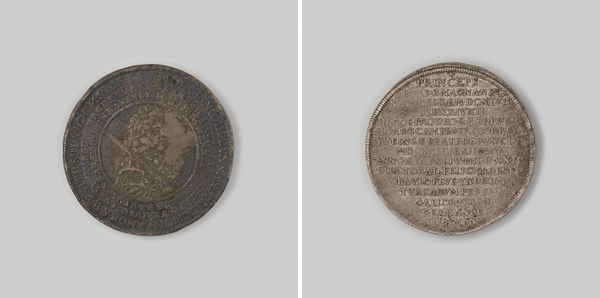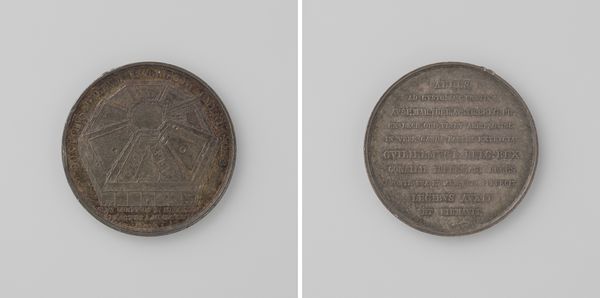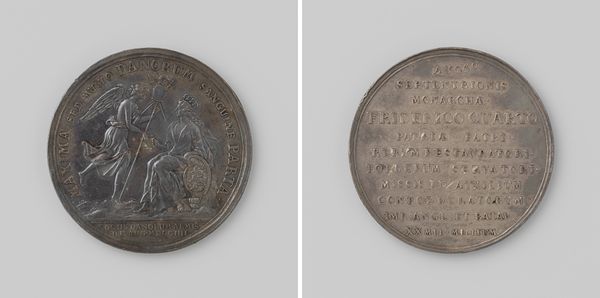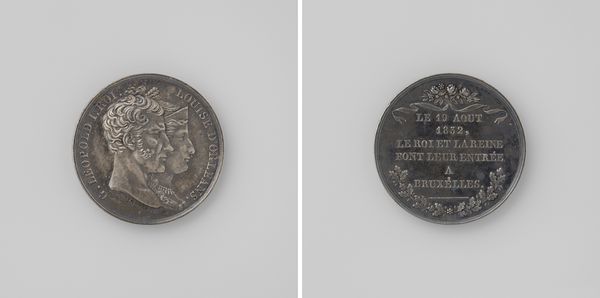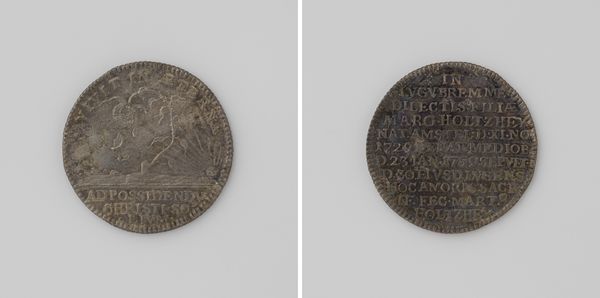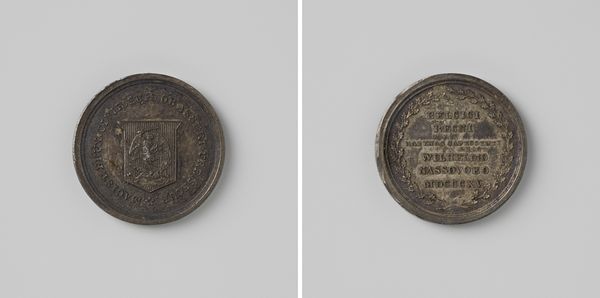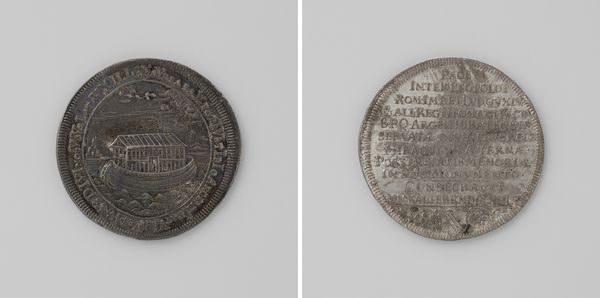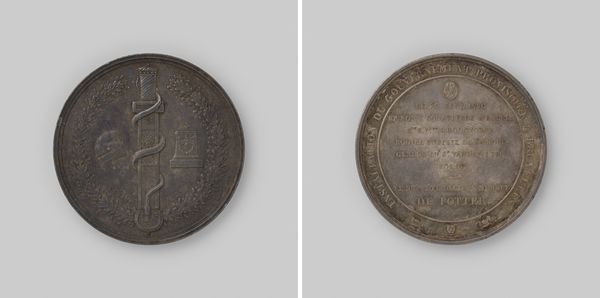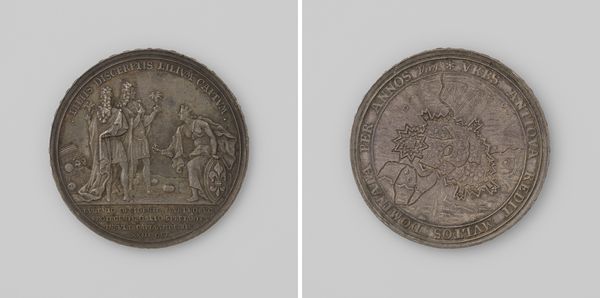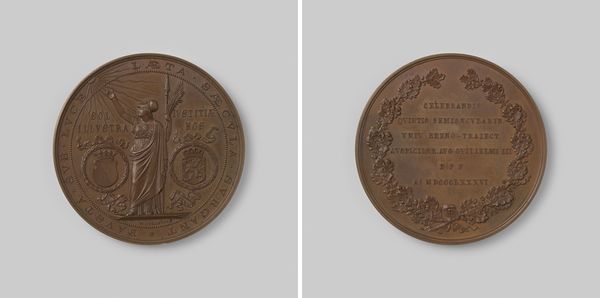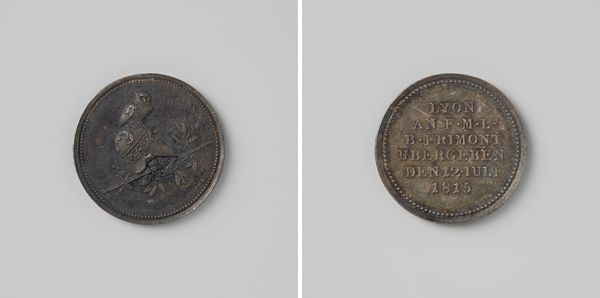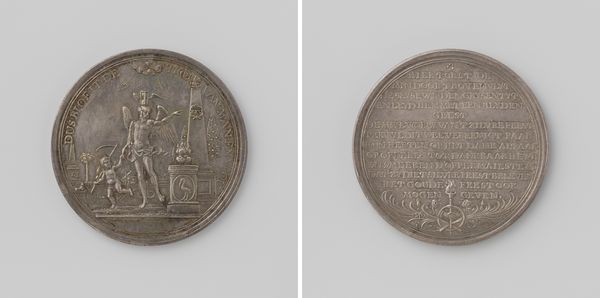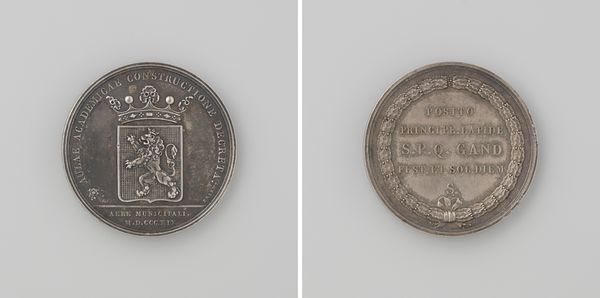
Erkenning van de onafhankelijkeid van het koninkrijk België door de XXIV Artikelen van de conferentie van Londen 1831
0:00
0:00
metal, relief, sculpture
#
neoclacissism
#
metal
#
relief
#
sculpture
Dimensions: diameter 4.1 cm, weight 36.70 gr
Copyright: Rijks Museum: Open Domain
Curator: Here we have a Neoclassical relief sculpture by Adrien Hippolyte Veyrat, created in 1831. The work is entitled "Recognition of the Independence of the Kingdom of Belgium by the XXIV Articles of the London Conference." It's crafted from metal. Editor: Immediately, I’m drawn to the contrast. The lion, regal under its crown, leaps from the circular frame, creating a very dynamic visual tension against the static, encircling laurel wreath. Curator: Absolutely, Veyrat has used a classical visual vocabulary here. The very choice of a medal implies widespread distribution and acts as a form of early mass communication that aimed to construct and disseminate a specific national narrative. The relief immortalizes the economic and social contexts surrounding the formal recognition of Belgian independence. Editor: You can definitely see a clear intention. It's so meticulously balanced! Notice the almost mathematical division of space, how the texture and form work together. I see echoes of Jacques-Louis David's civic virtue. It communicates stability and strength. Curator: Precisely, Neoclassicism revived during times of revolutionary fervor was used across Europe as a visual language that was both celebratory of a nation, and aspirational to values from ancient Greece and Rome. These symbolic references give Belgium this grander narrative on the international stage. Editor: Beyond its political messaging, there’s also a real sensitivity to material. The subtle gleam of the metal is what draws you closer. Curator: I think, the appeal is more than just the aesthetics of the medal. The work speaks of statehood, to industry and innovation, of shifting alliances during a revolutionary era, all cast in the symbolic language of neoclassical forms. Editor: In studying this, my understanding of that period has only expanded; the composition’s simple strength belies the complexity of the moment in time when a country gains its own sovereign nationhood. Curator: Indeed, it is in observing these seemingly “minor” decorative or functional arts that one sees the echoes of profound shifts in social and economic production on grand historical events.
Comments
No comments
Be the first to comment and join the conversation on the ultimate creative platform.
